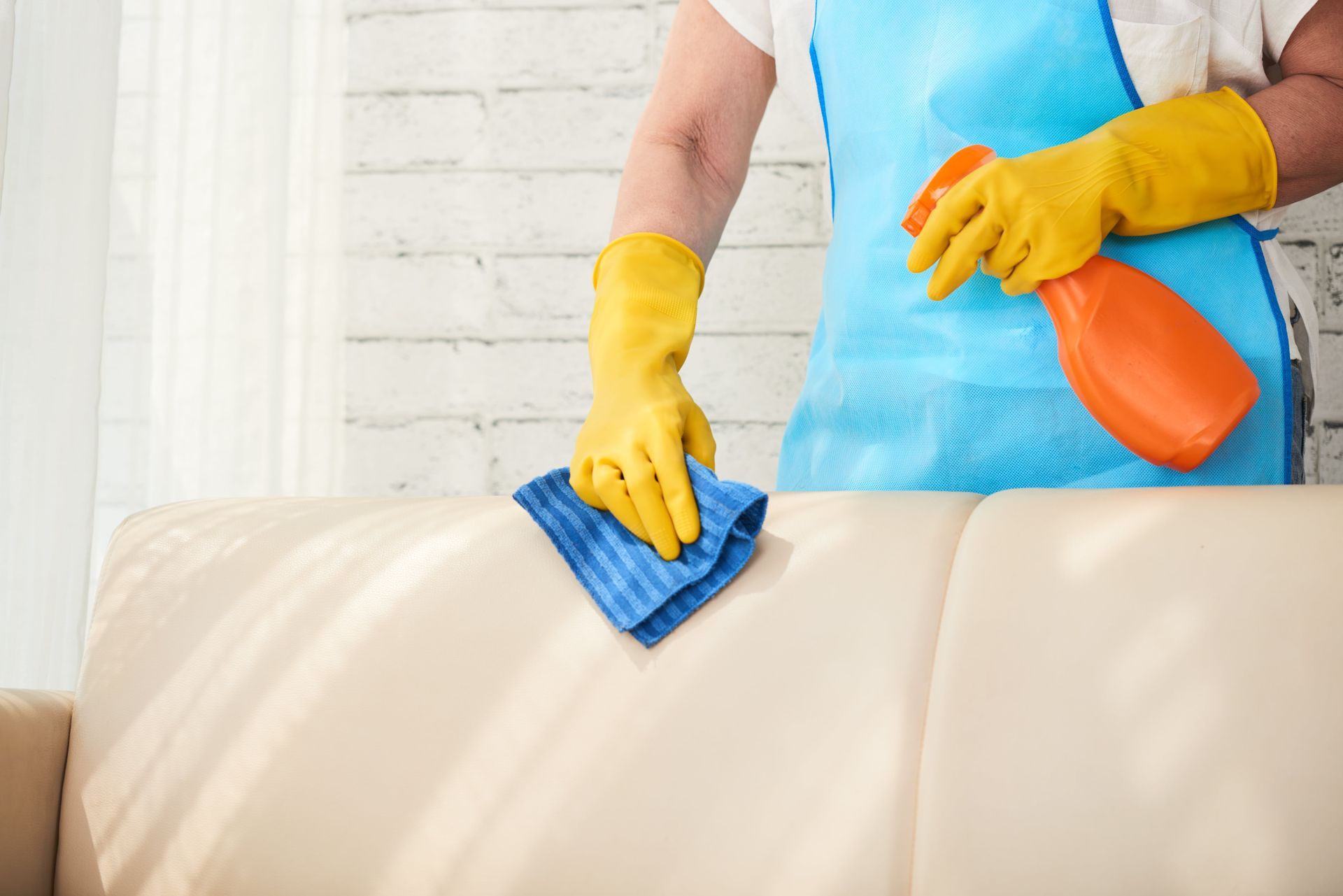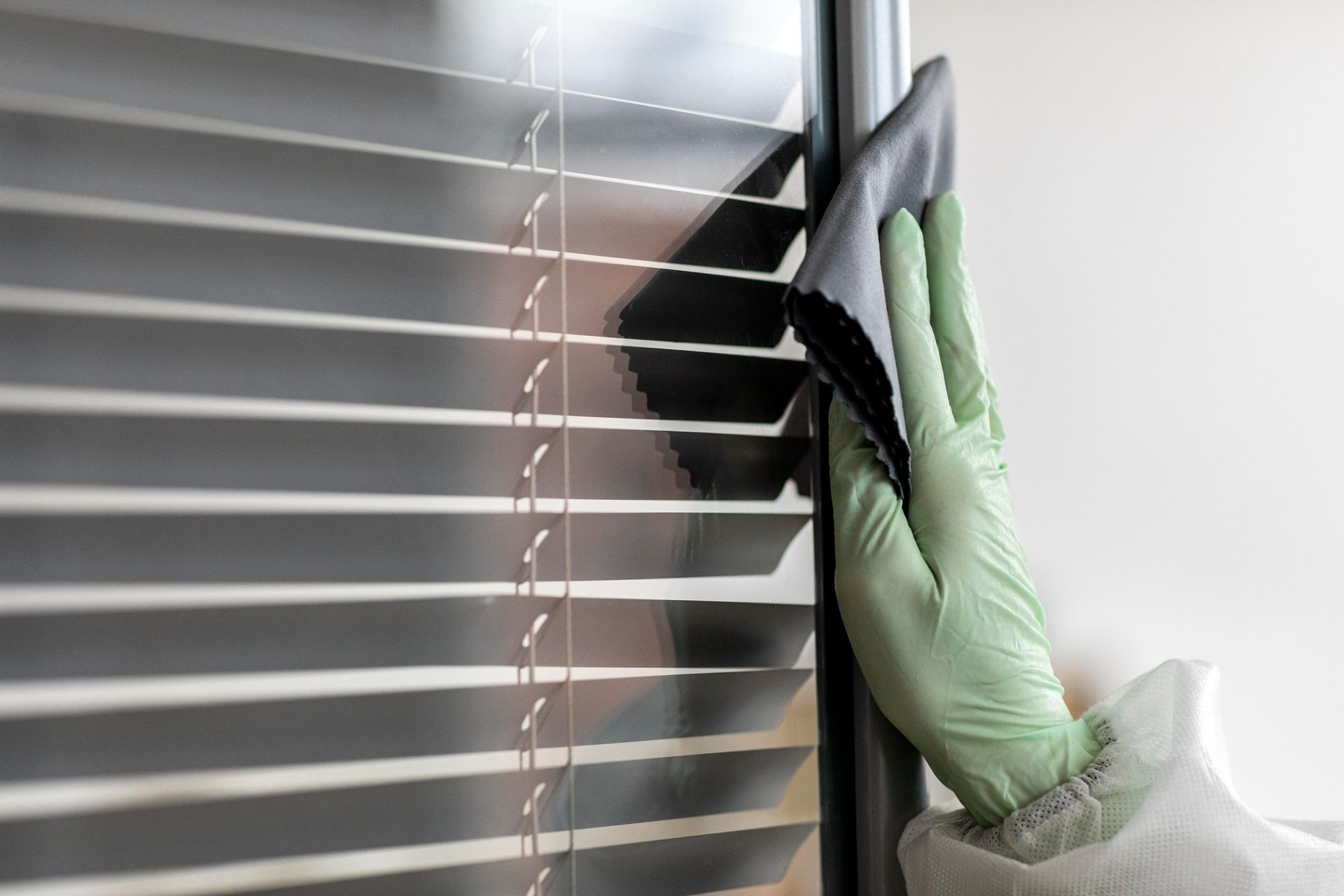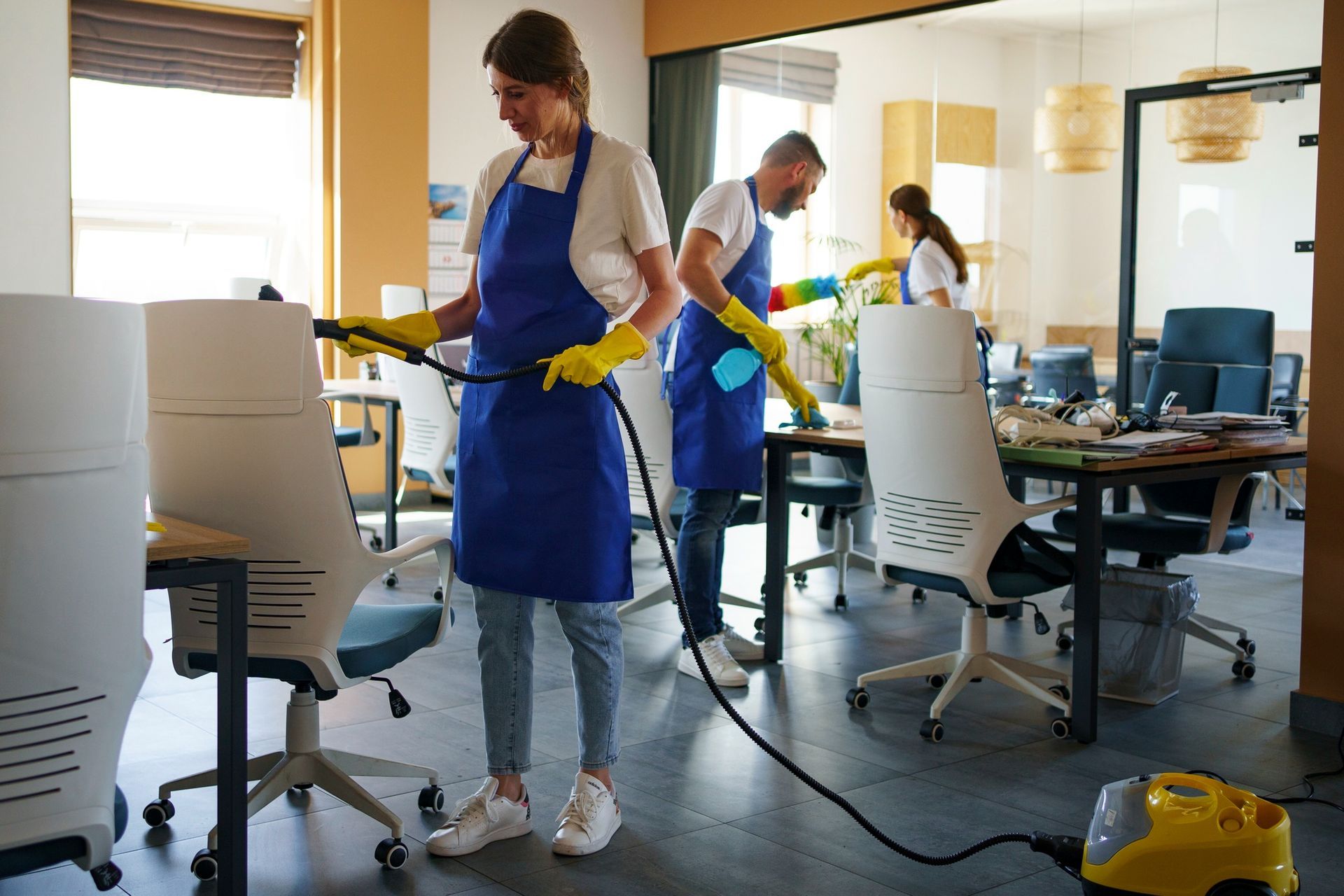Finding the Best Upholstery Cleaner for Every Fabric Type
Upholstery is a prominent feature in our homes and workplaces, from the beloved couch in our living room to the office chair we spend hours on. Given its constant use, upholstery is subject to a myriad of stains and dust accumulation. The key to keeping these important items in pristine condition lies in the selection of the best upholstery cleaner. But with varying fabric types, how does one choose the right cleaner? This article will guide you through finding the best upholstery cleaner for every fabric type.
Understanding Your Upholstery
Before diving into the world of upholstery cleaners, it's crucial to understand the kind of fabric you'll be dealing with. Upholstery fabrics are primarily categorized into two types: natural fibers and synthetic fibers. Each category carries a wide range of fabric types, each with its unique characteristics, strengths, and weaknesses.
Natural Fabrics
Natural fibers include materials like cotton, linen, wool, and silk. These fabrics tend to be highly breathable, lending themselves well to comfortable furniture items such as couches and beds. However, they also have their drawbacks. For instance, cotton and linen can be prone to staining and may not be as durable as some synthetic fibers. Wool, while resistant to staining, can absorb odors, and silk, being a delicate fabric, requires specialized cleaning to prevent damage.
- Cotton: Known for its versatility and durability, cotton is a common choice for upholstery due to its comfortable feel and adaptability to various design styles. However, cotton fabric can be susceptible to staining, especially if it's not treated with a stain-resistant finish. For this reason, when looking for upholstery cleaners specifically designed for cotton, consider those that are preferably enzyme-based. These cleaners are effective at breaking down stains because they digest the stain's protein molecules, effectively 'eating away' the stain. Moreover, enzyme-based cleaners can often outperform other types of cleaners on organic stains like food, sweat, or pet accidents, making them an excellent choice for cotton upholstery that sees heavy use or is in a household with children or pets.
- Linen: Prized for its light, airy feel and natural elegance, linen is a popular choice for upholstery in homes that favor a classic or rustic aesthetic. Despite its charm, linen can be particularly sensitive to water and heat, which can cause it to shrink or warp, therefore, it's usually best left to professional cleaning. However, for minor stains or spot cleaning, a mild, water-based upholstery cleaner can be used. When using any cleaner on linen, make sure to apply it gently and not oversaturate the fabric, as too much moisture can lead to more harm than good. It's also important to avoid solvent-based cleaners, as these can discolor the fabric and disrupt its natural texture. When treated with care, linen upholstery can maintain its unique appeal and provide a comfortable and stylish addition to your home decor.
- Wool: Cherished for its warmth and durability, wool is a classic choice for cozy, inviting upholstery. Thanks to its natural oils, wool is resistant to staining and can repel liquid spills, allowing time for cleanup before the substance is absorbed. However, wool fibers can absorb odors and may require more than just a vacuum to freshen up. A significant consideration when cleaning wool is its sensitivity to heat and agitation, which can cause it to shrink or felt. Therefore, it's best to opt for a cleaner specially formulated for wool. These cleaners are designed to remove stains and refresh the fabric without damaging the fibers, ensuring your wool upholstery stays plush and inviting. Bear in mind that wool should be dried away from heat and direct sunlight to prevent shrinking or color fading.
- Silk: Valued for its luxurious feel and natural sheen, silk is often used for high-end, decorative upholstery. However, this delicate fabric requires special care when it comes to cleaning. It's highly susceptible to water stains, and harsh cleaners can quickly cause damage. Therefore, a gentle cleaner, preferably one specifically designed for silk, should be used. When applying any cleaner to silk, it's crucial to be extra careful not to oversaturate the fabric, as this can lead to water stains that are difficult to remove. Always test any cleaning product on an inconspicuous area first, and follow up with a clean, damp cloth to remove any cleaner residue. In many cases, due to silk's delicate nature and high cost, professional cleaning may be the safest choice for silk upholstery. Professional cleaners have the experience and specialized tools needed to clean silk without causing damage, ensuring that your silk upholstery remains as lustrous and striking as the day you bought it.
Synthetic Fabrics
Synthetic fibers, on the other hand, encompass materials such as polyester, nylon, acrylic, and olefin. Synthetic fibers are man-made, and many are designed to overcome some of the weaknesses found in natural fibers. For example, polyester is well-known for its durability and stain resistance, while nylon is both durable and resilient, maintaining its shape well even after heavy use. Acrylic, a common wool substitute, can mimic wool's warm feel while offering better stain and sunlight resistance. Olefin boasts superior durability and colorfastness, making it a popular choice for outdoor furniture.
- Polyester: Valued for its versatility and longevity, polyester is a popular choice for upholstery in homes and businesses alike. It's a durable fabric that's often stain-resistant, making it a reliable choice for households with children or pets, or in commercial spaces where the furniture sees heavy use. This hardiness means polyester can be safely cleaned with most water-based upholstery cleaners, making it a relatively low-maintenance option. However, despite its resilience, there are certain products that should be avoided when cleaning polyester. Bleach-based products, for instance, can be damaging to polyester fibers, causing them to break down and degrade over time. Instead, opt for cleaners that are specifically marked as safe for polyester. Regular maintenance and immediate attention to spills can keep your polyester upholstery looking fresh and clean, contributing to a welcoming and comfortable environment in your home or business.
- Nylon: Renowned for its resilience and ability to withstand heavy wear, nylon is a common choice for furniture in high-traffic areas. Despite its robust nature, nylon can be damaged by harsh cleaners, particularly those that are highly alkaline or acidic. Therefore, when cleaning nylon upholstery, it's advisable to stick with mild, water-based cleaners that are free from bleach or strong acids. Avoid any product that lists ingredients like sodium hydroxide or hydrochloric acid, as these can cause the nylon fibers to deteriorate. Instead, look for pH-neutral cleaners, which are more gentle and will preserve the integrity of your nylon upholstery. As with other fabrics, it's always a good idea to test any new cleaner on an inconspicuous area before applying it to a more visible section of your upholstery. With the right care and maintenance, nylon upholstery can provide a durable and attractive option for your furniture needs.
- Acrylic: Known for its ability to mimic natural fibers like wool while offering improved stain and sunlight resistance, acrylic is often found in outdoor or high-traffic furniture. As a synthetic fabric, it's generally less sensitive to water than natural fibers, so a water-based cleaner is usually safe for acrylic upholstery. However, it's still crucial to avoid oversaturating the fabric, as too much moisture can lead to mildew growth, especially in humid conditions. Also, steer clear of cleaners that contain bleach, as these can cause discoloration. If your acrylic upholstery is a blend with other materials, always follow the cleaning recommendations for the most delicate material in the mix to ensure you don't inadvertently cause damage. Regular spot cleaning, combined with a deep clean every few months, can keep your acrylic furniture vibrant and inviting, offering a durable and comfortable space for relaxation or entertainment.
- Olefin: Recognized for its exceptional durability and colorfastness, olefin is a popular choice for both indoor and outdoor furniture. Its resistance to staining, mildew, and abrasion makes it a practical choice for households with children, pets, or in spaces exposed to harsh weather conditions. Despite its durability, olefin should still be treated with care during cleaning. This fabric can be cleaned with a variety of cleaners, but harsh chemicals should be avoided to prevent damage to the fibers. Instead, opt for mild, water-based cleaners or those specifically formulated for synthetic fabrics. When it comes to spills, prompt action is recommended. Blotting the spill gently without rubbing can prevent the substance from penetrating deeper into the fabric. With appropriate care and cleaning, olefin upholstery can maintain its appearance and functionality for years, making it an excellent long-term investment for your living spaces.
But these general characteristics are only the tip of the iceberg. Each fabric type within these categories can come in a range of weaves and finishes, which can impact their durability, feel, and appearance. It's important to familiarize yourself with the specific kind of fabric your upholstery is made of, usually by checking its tag or the product information.
Once you have a solid grasp of your upholstery fabric's characteristics, you can then proceed to select the
best cleaning products. It's always a good idea to do a spot test on an inconspicuous area of the fabric before going ahead with a new cleaner, even when the cleaner is designed for your fabric type. That way, you can ensure the cleaner won't damage or discolor your upholstery.
How to Choose an Upholstery Cleaner
Your upholstery is an essential element of your home decor, providing comfort, style, and functionality to your living spaces. Over time, however, daily use can lead to inevitable wear and tear, and spills or stains can pose a challenge. This is where a reliable upholstery cleaner comes to the rescue, helping to revitalize and maintain the beauty of your furniture. But with a myriad of options available, how do you choose the right one for your upholstery's specific needs?
Here are a few pointers to consider when choosing an upholstery cleaner:
- Fabric Type: As we've seen, the first and foremost consideration when choosing an upholstery cleaner is your fabric type. Different fabrics have unique characteristics and sensitivities, and using the wrong cleaner can result in damage or discoloration. Always check the cleaner's label to see if it's suitable for your specific material. Look for cleaners that explicitly mention compatibility with your upholstery fabric type, whether it's natural or synthetic, to ensure you are making the best choice for your furniture. If you're unsure about which cleaner to use, don't hesitate to seek advice from upholstery experts or professional cleaners who can guide you towards the most appropriate product for your specific fabric type.
- Cleaning Power: When evaluating upholstery cleaners, it's essential to check the product's reviews and ratings to see how well it performs in real-world scenarios. Look for cleaners that have positive feedback from users who have used them on similar fabric types to yours. However, keep in mind that stronger isn't always better when it comes to cleaners. While a powerful cleaner might seem tempting to tackle tough stains, a too-harsh formulation can cause irreversible damage to your fabric. Instead, opt for a cleaner that strikes a balance between effective stain removal and gentleness, ensuring your upholstery stays in optimal condition for years to come.
- Safety: Before purchasing any upholstery cleaner, consider its safety aspects, especially if you have children or pets in your home. Look for cleaners that are non-toxic and free from harmful chemicals. Avoid products with strong fumes or volatile compounds that could pose risks to the health of your family and pets. Opt for environmentally friendly and biodegradable cleaners when possible, as they are not only safer for your loved ones but also better for the planet. By prioritizing safety, you can confidently maintain a clean and healthy living environment for everyone in your home.
- Eco-Friendliness: If environmental impact is a concern for you, it's worth considering whether the upholstery cleaner you choose is eco-friendly. Look for products that are biodegradable, meaning they can break down naturally without harming the environment. Additionally, check if the packaging is recyclable to minimize waste. Many manufacturers are now offering eco-conscious cleaning solutions that are effective while being kind to the planet. By opting for eco-friendly upholstery cleaners, you can contribute to sustainable practices and reduce your carbon footprint, making a positive impact on the environment.
- Test First: Regardless of the upholstery cleaner you select, it's crucial to conduct a patch test on a small, inconspicuous area of your upholstery before applying it to the entire surface. This test will help you determine if the cleaner is compatible with your fabric and won't cause any discoloration or damage. Remember that different fabrics may react differently to various cleaners, so this simple precaution can save you from potential mishaps and ensure your upholstery remains in top-notch condition.
Professional vs. DIY Upholstery Cleaning
Professional upholstery cleaning and DIY cleaning each have their advantages and are best suited for different situations. Let's explore more ideas and explanations:
Professional Upholstery Cleaning:
- Expertise and Experience: Professional upholstery cleaners are trained and experienced in handling various fabric types and challenging stains. They understand the intricacies of different materials and can employ appropriate cleaning techniques to achieve the best results.
- Specialized Equipment: Professional cleaning companies have access to advanced equipment and tools that DIY cleaners may not possess. High-powered steam cleaners and extraction machines can effectively remove deep-seated dirt, allergens, and stains.
- Deep Cleaning: Professional services offer deep cleaning that reaches deep into the fibers of your upholstery, removing hidden dirt and debris that may not be visible to the naked eye.
- Extended Lifespan: Regular professional cleaning can extend the lifespan of your upholstery. The thorough removal of dirt, dust, and debris can prevent premature wear and tear, keeping your furniture looking fresh for longer.
- All-Inclusive Service: Many professional cleaning companies offer a complete service, not just for upholstery but also for carpets, rugs, and other household surfaces, providing you with a comprehensive cleaning solution.
DIY Upholstery Cleaning:
- Cost-Effectiveness: DIY cleaning can save money compared to hiring professional services, especially for routine maintenance or small stains that can be promptly addressed.
- Convenience: For minor spills or stains, having a few DIY cleaning solutions readily available can be convenient and allow for immediate action to prevent further damage.
- Eco-Friendly Options: DIY cleaning allows you to choose eco-friendly cleaning solutions or make your own using natural ingredients, reducing the use of harsh chemicals in your home.
- Regular Maintenance: DIY cleaning is perfect for regular maintenance, such as vacuuming or light spot cleaning, to keep your upholstery looking fresh between professional cleanings.
- Familiarity with Your Upholstery: Since you know your upholstery best, DIY cleaning enables you to have full control over the cleaning process and ensure specific care for your furniture.
Choosing between professional and DIY upholstery cleaning depends on the specific needs of your upholstery and the complexity of the stains or dirt present. For routine maintenance and small stains, DIY cleaning can be effective. However, for deep-seated stains, delicate fabrics, or when you want a thorough, long-lasting clean, professional services are the way to go. Keep in mind that combining both approaches can be an excellent strategy, as regular professional cleanings complement DIY maintenance to keep your upholstery in pristine condition.
FAQs - Finding the Best Upholstery Cleaner for Every Fabric Type:
Conclusion
Maintaining your upholstery is no small task, but with the right cleaner, it becomes significantly easier. Understanding the type of fabric you're dealing with is half the battle, and from there, you can select a cleaner that will get the job done without damaging your furniture.
However, when in doubt, it's always best to call in the professionals. In the area of
professional cleaning services, Offshore Carpet Cleaning and Janitorial Services stands out as an exceptional option. With a wide range of services and a team of experienced professionals, they can handle any fabric type and any stain. Why stress over cleaning your upholstery when you can entrust it to the experts? Reach out to Offshore Carpet Cleaning and Janitorial Services today, and experience the ease and quality of professional upholstery cleaning.



